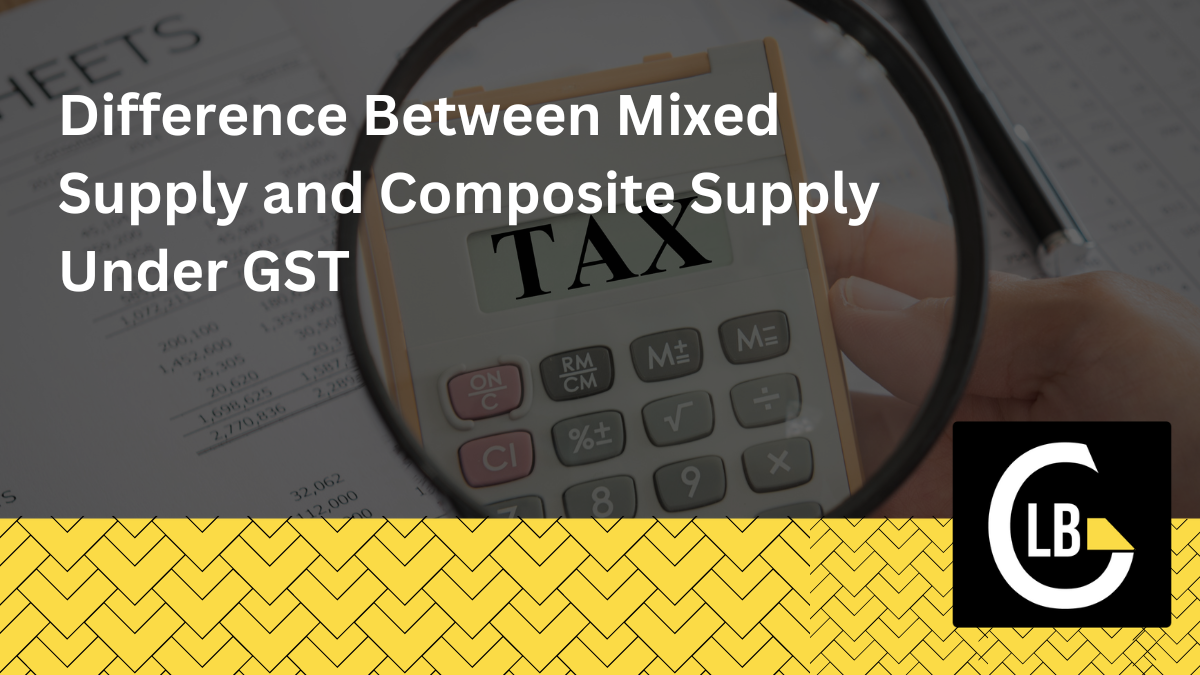When you’re running a business, understanding tax rules can feel like a tough task. But it doesn’t have to be! In India’s GST system, two important terms that come up are Mixed Supply and Composite Supply. Let’s break them down in a way that’s simple and easy to understand.
What is Composite Supply?
Think of Composite Supply like a combo deal that makes sense. It’s when you buy two or more things together because they naturally go together. One of the items is the main product (also called the principal supply), and the others just come along because they make sense together.
Example of Composite Supply:
Imagine buying a laptop that comes with a warranty. The laptop is the main product you’re paying for, and the warranty is an added service. You wouldn’t buy a warranty without the laptop, right? These two are naturally bundled.
Tax Rule for Composite Supply:
The tax you pay depends on the main product. So, if the laptop is taxed at 18%, then everything you buy as part of that combo (like the warranty) will also be taxed at 18%.
What is Mixed Supply?
Now, Mixed Supply is more like a gift hamper with random items thrown together. The products don’t necessarily belong with each other; they’re just being sold as a package.
Example of Mixed Supply:
Imagine a gift basket with chocolates, cookies, and a bottle of soda. These are all separate items, and you could easily buy each one on its own. There’s no natural reason why they’re bundled, except to offer them together as a package.
Tax Rule for Mixed Supply:
Here’s the tricky part: for Mixed Supply, the tax is based on the item in the group with the highest tax rate. So, if the soda is taxed at 28% and the chocolates at 18%, the entire basket will be taxed at 28%, even though some items have a lower tax rate.
Key Differences Between Composite and Mixed Supply
Here’s a quick summary of how they differ:
| Composite Supply | Mixed Supply |
| Naturally bundled items sold together. | Random, unrelated items sold together. |
| Taxed at the rate of the main product. | Taxed at the highest rate among the items. |
| Example: Laptop with a warranty. | Example: Gift hamper with chocolates and soda. |
Conclusion
Understanding the difference between Composite Supply and Mixed Supply is important for any business dealing with GST. In Composite Supply, items are naturally bundled, and the tax rate is based on the main product. In Mixed Supply, unrelated items are sold together, and the highest tax rate among them is applied.
So, the next time you put together a combo offer or bundle some products, remember to check whether it’s a Composite or Mixed Supply! It could make a big difference in how much tax you end up paying.
